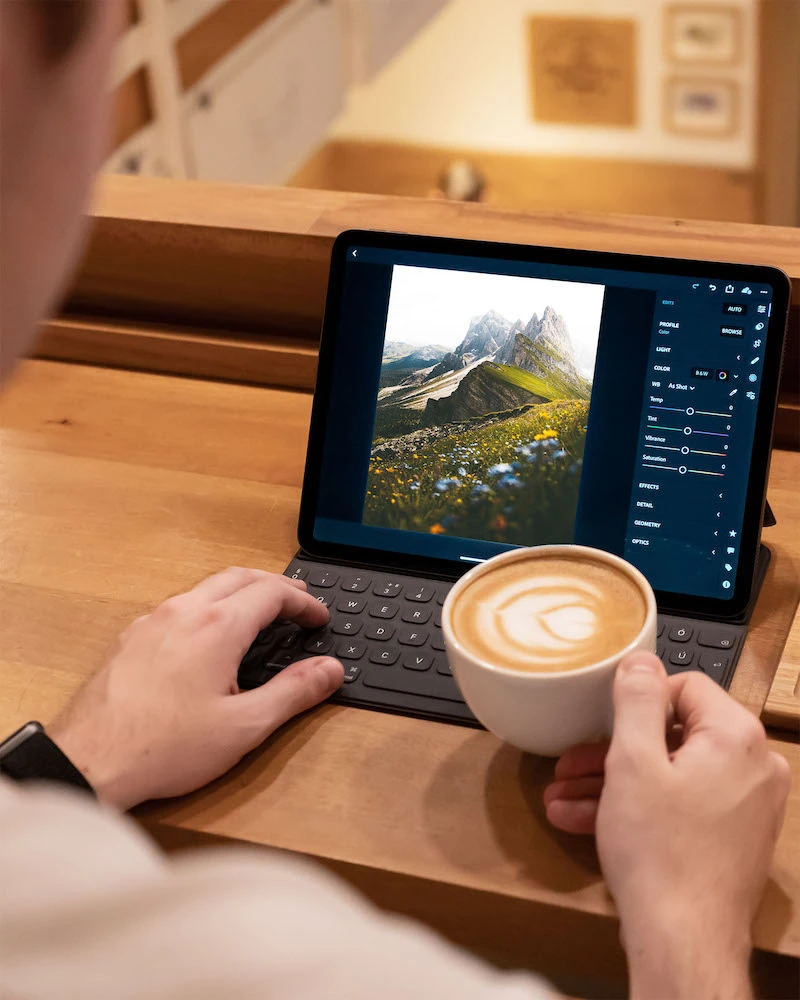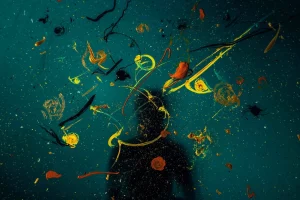Capture One est le logiciel de traitement d’images développé par la société danoise Phase One, fondée en 1993. Ce logiciel est passé par de nombreuses versions et étapes pour devenir ce qu’il est aujourd’hui, c’est-à-dire l’un des logiciels d’édition de photo les plus innovants du marché et des plus populaires auprès des photographes professionnels.
Afin d’expliquer la révolution et le succès dont Capture One fait preuve, nous nous pencherons sur son histoire. Pour cela, il faut revenir à ses origines, examiner ses aspirations et passer en revue les améliorations qu’il a apportées au fil des années.
Sommaire
La naissance de Capture One
Capture One est aujourd’hui l’un des logiciels de retouche d’images les plus puissants qui existent, mais comment est-il né ?
Les débuts de Capture One : un convertisseur d’images RAW
Pour faire un zoom sur l’histoire de Capture One, il est nécessaire de remontrer à ses origines. Capture One est né en 1994 comme convertisseur d’images RAW pour les appareils Phase One, société danoise spécialisée dans les équipements et logiciels de photographie numérique haut de gamme. Phase One est rachetée en 2020 par Axcel, société de capital-investissement de sociétés de haute qualité, et est placé sous la direction de Rafel Orta. Capture One est donc, au début, une application pour les appareils photo Phase One et est aujourd’hui un logiciel reconnu des photographes et studios professionnels partout dans le monde.

2003 : la création d’une marque indépendante
Dès 2003, la société montre une volonté d’établir une véritable séparation entre le logiciel et le fabricant d’appareils photo, afin de pouvoir évoluer indépendamment et de faire ses preuves en tant qu’entreprise de logiciels de photographie. La marque indépendante Capture One est ainsi créée en 2003 et devient compatible à d’autres marques d’appareils photo (la liste contient désormais plus de 600 profils d’appareils photo et objectifs). C’est ce qui lui a ensuite permis de se faire une place sur le marché.
Capture One : une histoire de passion
L’histoire de Capture One est marquée par sa grande passion de la photographie et la reproduction du réel, menant inévitablement à son succès.
Une entreprise inspirée par l’art des photographes
Capture One est un logiciel d’édition dédié aux photographes et développé en ne perdant jamais de vue les besoins de ces derniers. Afin de développer le meilleur outil, la société s’inspire directement de l’art des photographes qui, à travers leur travail, transportent le public dans des endroits uniques.
Cette vocation permet à la société de développer de nouveaux outils et de nouvelles versions du logiciel permettant de travailler de n’importe où et avec n’importe qui. Phase One continue de s’appuyer sur la responsabilisation de leur communauté de photographes venant des quatre coins du globe afin qu’ils puissent partager leur travail au monde entier.
La recherche de l’image parfaite
Dès 2003, Capture One travaille pour les limites de l’édition et de la reproduction des couleurs. Il n’est pas anodin qu’il soit à l’origine un logiciel de conversion de fichiers RAW. Son objectif : proposer un produit de traitement d’images permettant aux photographes de produire une image la plus fidèle à la scène photographiée ; scène que nous ne verrions pas autrement.
En effet, certaines couleurs ont des nuances infinies que l’œil humain peut voir, mais que l’appareil photo ne peut pas reproduire. Chaque nouvelle version de l’interface repousse un peu plus les limites du contrôle des couleurs.
Capture One : un logiciel d’édition photo innovant
De la prise en charge de nouveaux appareils photo à l’amélioration des couleurs, Capture One évolue rapidement et se montre innovant. Afin d’effectuer un zoom sur l’évolution de Capture One, il semble nécessaire de mentionner deux secteurs présents au cœur des innovations du logiciel : la collaboration et l’expérience utilisateur.
La collaboration au centre de l’innovation de Capture One
L’un des objectifs de Capture One, et ce qui lui permet de se différentier, est d’enrichir le processus de collaboration des professionnels de la photo. Alors que Capture One 11 introduisait des outils d’annotation, qui peuvent, par exemple, servir à indiquer des lignes de force ou certaines retouches à effectuer à un collaborateur, Capture One va encore plus loin en lançant Capture One Live. Ce nouvel outil permet de collaborer à distance : les photos peuvent être envoyées aux collaborateurs pendant la séance photo grâce à un retour d’information rapide et instantané.
Innover pour améliorer l’expérience utilisateur
Afin d’améliorer l’expérience des photographes, Capture One continue ses améliorations en termes de personnalisation et de rapidité.
Une expérience personnalisée
À travers des années de recherches, de travail et de développement, Capture One a réussi à développer un écosystème flexible proposant des produits pour différents usages, dont :
- Capture One Pro pour l’ordinateur et pour une vision globale ;
- Capture One iPad pour éditer ses photos n’importe où et lors de déplacements ;
- Capture One Styles pour un logiciel d’édition qui permet de s’exprimer et qui s’adapte à chaque utilisateur ;
- Capture One Live pour éditer des photos en collaboration.
Dans la même démarche, le logiciel construit une interface d’édition de plus en plus personnalisable. Ce n’est pas l’utilisateur qui s’adapte au logiciel, mais le logiciel qui s’adapte à l’utilisateur. Chaque nouvelle fonctionnalité et chaque nouvel outil peut être ajouté à la boîte à outils de l’éditeur et peut être déplacé comme il le souhaite ou même masqué, selon ses besoins.

Un gain de temps conséquent
Capture One est également innovateur en ce qui concerne la sélection automatisée rapide, ce qui permet de gagner de nombreuses heures de sélection manuelle. En 2020, Capture One 21 introduit notamment l’outil Speed Edit pour rendre les sessions d’édition beaucoup plus dynamiques. Les curseurs de cet outil permettent de faire des ajustements rapides et fluides sur des clichés individuels ou sur des groupes de photos. Il propose également des raccourcis innovants créés pour accélérer le processus de retouches.
Versions de Capture One et améliorations
Procédons à un tour d’horizon des versions de Capture One afin de mieux visualiser les nouveautés apportées et les différentes avancées.
- Capture One 7 : catalogues et OpenCL avancé.
- Capture One 8 : qualité d’image améliorée, couches de réparation, grain de film, balance des blancs locale et interface utilisateur améliorée.
- Capture One 9 : amélioration du traitement des couleurs DNG, courbes Luma et locales, révision des algorithmes de contraste et outils de gestion des actifs.
- Capture One 10 : nouvel outil de mise au point de l’appareil photo, nouveau filtre pour l’orientation des images, plus de propriétés Apple Script, optimisé pour la sortie JPEG, déplacement des dossiers dans les catalogues, support du RAW compressé, prise en charge de nouveaux objectifs et boîtiers d’appareils photo.
- Capture One 11 : nouvel outil d’annotations, intégration des calques et polyvalence du masquage.
- Capture One 12 : nouvelle interface utilisateur, masque de luminosité, de dégradé radial, capacités des plug-ins, simulations de films Fujifilm.
- Capture One 20 : nouvel outil de correction, nouvel éditeur de couleurs de base, outil de plage dynamique élevée, réduction du bruit améliorée, outils de défilement, outil de recadrage amélioré, prise en charge des fichiers DNG, prise en charge de la copie des calques et des masques, améliorations de l’interface, outils de tri d’images et nouveaux raccourcis clavier.
- Capture One 21 : modifications rapides, nouvel outil de suppression de brume, profils ICC ProStandard, importateur remanié, ajustements faciles au pinceau, connexion Leica, prise en charge des fichiers HEIF.
- Capture One 22 : Panorama, fusion HDR, connexion sans fil pour Canon, rotation automatique pour les horizons.
Capture One continue de faire évoluer son logiciel en travaillant aux côtés des photographes dans le monde entier.









